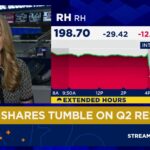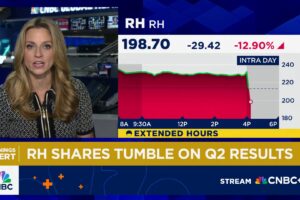
Two- and 10-year Treasury yields fell on Wednesday, snapping a three-day streak of advances, as traders weighed the prospects of disinflation against U.S. central bankers’ need for higher interest rates.
What happened?
- The yield on the 2-year Treasury note TMUBMUSD02Y, 4.425% declined 1.7 basis points to 4.452% from 4.469% on Tuesday. Tuesday’s level was the highest for the 2-year rate since Nov. 29, based on 3 p.m. figures from Dow Jones Market Data.
- The 10-year Treasury note yield TMUBMUSD10Y, 3.623% slipped 2.1 basis points to 3.652% from 3.673% on Tuesday. Tuesday’s level was the highest for the 10-year rate since Jan. 5.
- The 30-year Treasury bond yield TMUBMUSD30Y, 3.673% rose less than 1 basis point to 3.711% from 3.706% on Tuesday.
What drove the market?
A handful of Federal Reserve officials spoke on Wednesday, starting with New York President John Williams, who said that a 5% to 5.25% peak fed funds rate is still a good goal and indicated that quarter-of-a-percentage point hikes like the one on Feb. 1 are an optimal approach.
Fed Gov. Lisa Cook and Minneapolis Fed President Neel Kashkari also said more rate hikes are needed, while Fed Gov. Christopher Waller said he’s “prepared for a longer fight to get inflation down” and that rates need to remain high for “some time.”
Wednesday’s comments by policy makers came as inflation traders penciled in the likelihood that inflation, as measured by the annual headline rate on the consumer-price index, will fall below 3% by June and stay in the vicinity of 2% for the entire second half of 2023. That’s a much faster time frame for a return to more normal-looking, pre-pandemic inflation levels than many investors and policy makers expect.
In remarks on Tuesday, Powell said that the process of disinflation will probably be “bumpy” and that the January jobs report, which revealed a much stronger-than-expected 517,000 jobs bump, underscores why it’s going to take a long time.
Need to Know: No wonder Powell didn’t commit to extra hikes. Here are five reasons the January jobs report may be too good to be true.
What analysts are saying
“Fed officials continue to beat the drum of more rate hikes to come despite the market continuing to question the Fed’s resolve for further tightening and pricing in a rate cut in the second half of the year,” said Lindsey Piegza and Lauren Henderson, economists at Stifel, Nicolaus & Co.
“The key takeaway from Powell’s remarks was further hikes to come, potentially
resulting in a higher-for-longer scenario,” they wrote in a note.






